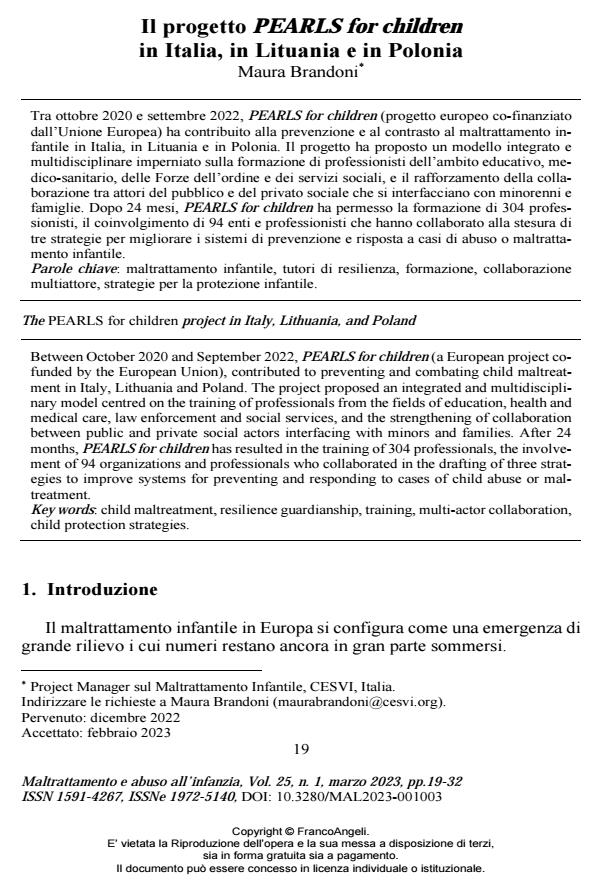The PEARLS for children project in Italy, Lithuania, and Poland
Journal title MALTRATTAMENTO E ABUSO ALL’INFANZIA
Author/s Maura Brandoni
Publishing Year 2023 Issue 2023/1
Language Italian Pages 14 P. 19-32 File size 185 KB
DOI 10.3280/MAL2023-001003
DOI is like a bar code for intellectual property: to have more infomation
click here
Below, you can see the article first page
If you want to buy this article in PDF format, you can do it, following the instructions to buy download credits

FrancoAngeli is member of Publishers International Linking Association, Inc (PILA), a not-for-profit association which run the CrossRef service enabling links to and from online scholarly content.
Between October 2020 and September 2022, PEARLS for children (a European project co-funded by the European Union), contributed to preventing and combating child maltreat-ment in Italy, Lithuania and Poland. The project proposed an integrated and multidiscipli-nary model centred on the training of professionals from the fields of education, health and medical care, law enforcement and social services, and the strengthening of collaboration between public and private social actors interfacing with minors and families. After 24 months, PEARLS for children has resulted in the training of 304 professionals, the in-volvement of 94 organizations and professionals who collaborated in the drafting of three strategies to improve systems for preventing and responding to cases of child abuse or mal-treatment.
Keywords: child maltreatment, resilience guardianship, training, multi-actor collaboration, child protection strategies.
Maura Brandoni, Il progetto PEARLS for children in Italia, in Lituania e in Polonia in "MALTRATTAMENTO E ABUSO ALL’INFANZIA" 1/2023, pp 19-32, DOI: 10.3280/MAL2023-001003